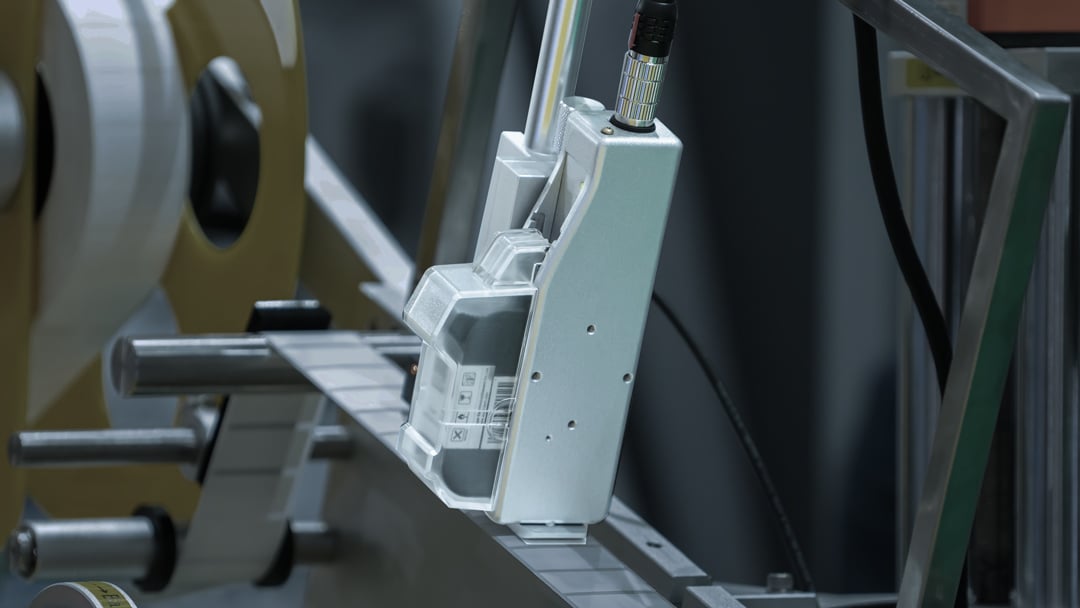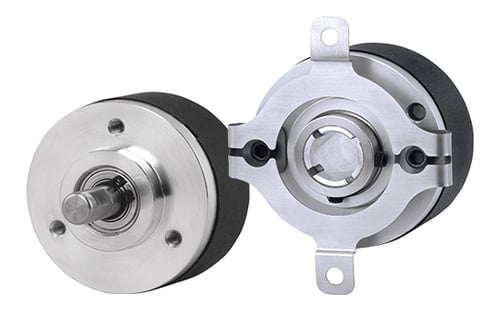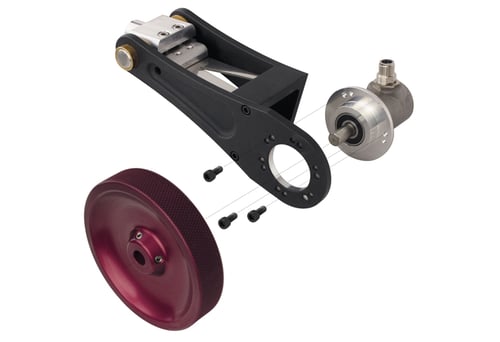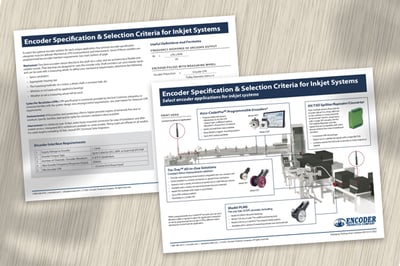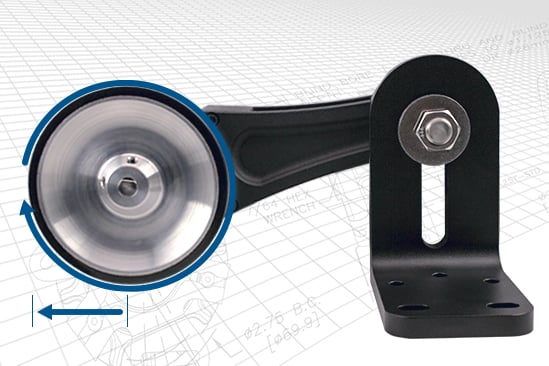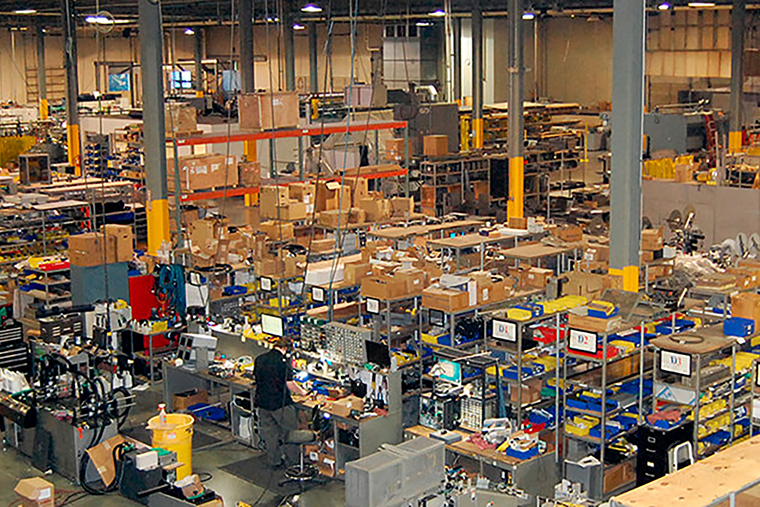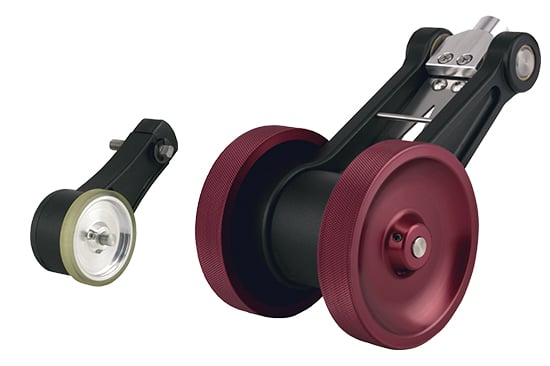2. Resolution / Cycles Per Resolution (CPR)
Often, industrial ink jet systems are used to mark products that are in motion on a conveyor or other transport system. The encoder resolution, defined as Cycles Per Revolution (CPR), usually provides the printer a measurement in pulses per inch (or millimeter) of linear travel of the product to be marked. To determine encoder pulses per inch/mm, it’s necessary to calculate the exact distance the product travels with each rotation of the encoder shaft. Measuring wheels are often used for this purpose.
For example, an encoder with a resolution of 4000 CPR and a 200 mm wheel riding on the conveyor surface yields 20 pulses per mm of linear travel. Generally, the encoder resolution is specified to yield a pulse per inch/mm rate that meets printer requirements. If the encoder is applied to a headroll shaft, drive belt, or a servo motor, the ratio between encoder rotation and linear travel is a more complex calculation. CPR specification is commonly provided by someone familiar with the system design and sensing/control requirements.
